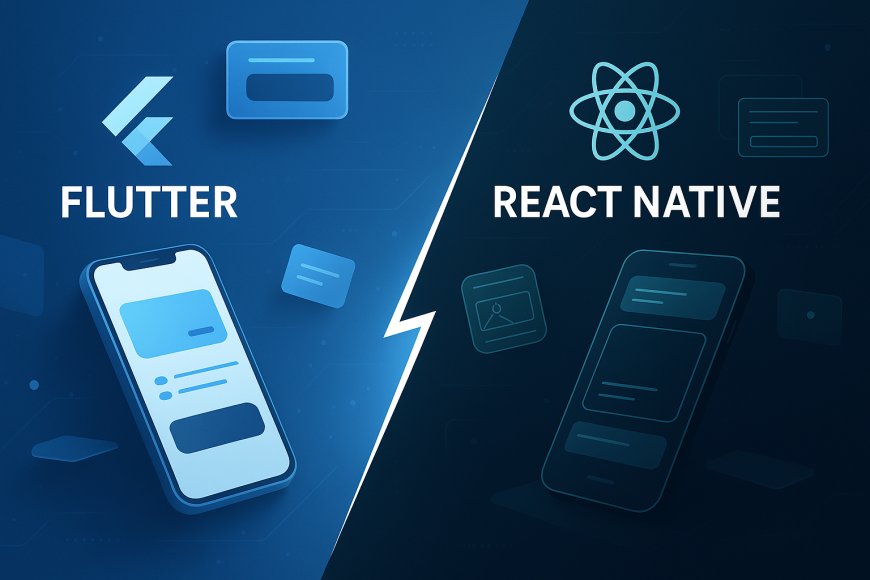Flutter vs React Native in 2025: Which One Should You Choose for Your Next App?
Compare Flutter vs React Native in 2025. Explore performance, UI consistency, developer experience, and more to choose the best for your next mobile project.

As mobile technology advances at full speed in 2025, choosing the right framework for your app is more critical than ever. For businesses and developers alike, the decision often comes down to two heavyweights: Flutter and React Native. Both are powerful, cross-platform tools, but which is the best fit for your mobile app development goals this year?
In this guide, well break down their differences, strengths, and ideal use cases to help you make an informed decision for your next app.
Why Flutter and React Native Dominate the Cross-Platform Scene in 2025
Both frameworks allow developers to write one codebase and deploy it across iOS and Android saving time, cost, and effort. But there are key differences that matter, especially when working with a professional mobile app development company or hiring experienced app developers.
Flutter in 2025: Stronger Than Ever
Flutter, backed by Google, uses the Dart programming language and has gained a reputation for:
-
Smooth performance thanks to its Skia-based rendering engine
-
Customizable UI with pixel-perfect control
-
Reduced maintenance over time due to strong typing and consistent architecture
Many businesses are now opting for Flutter app development when they want high-performance apps with rich animations and a consistent user interface across platforms.
React Native in 2025: Lean and Familiar
React Native, maintained by Meta (Facebook), is still the top choice for teams familiar with JavaScript and web technologies. Its strengths include:
-
Widespread adoption and massive community support
-
Faster MVP development due to reusable web skills
-
Access to native components via a growing plugin ecosystem
For companies already working with a web tech stack, React Native app development makes it easier to onboard teams and launch quickly.
Key Comparison: Flutter vs React Native
| Feature | Flutter | React Native |
|---|---|---|
| Language | Dart | JavaScript / TypeScript |
| Performance | High (native-like) | High (improving with JSI architecture) |
| UI Customization | Excellent | Good |
| Developer Experience | Structured, scalable | Familiar, fast for web devs |
| Community & Libraries | Growing rapidly | Mature, very large |
| Best Use Cases | Complex, design-heavy apps | MVPs, fast prototyping |
Which One Should You Choose in 2025?
Choose Flutter if:
-
You need consistent UI across platforms
-
Performance and animations are a priority
-
Your team prefers structured, strongly typed code
Choose React Native if:
-
You already have a JavaScript team
-
You want to release an MVP quickly
-
You need access to a wider variety of third-party libraries
Ultimately, the choice between Flutter and React Native comes down to your apps requirements, your teams skillset, and how quickly you need to go to market.
Partnering with the Right Development Team
Whether you choose Flutter or React Native, working with an experienced mobile app development company is essential. A skilled team of app developers can help you:
-
Define the right tech stack for your product
-
Build scalable, maintainable architecture
-
Launch faster with fewer post-launch issues
Final Thoughts
In 2025, both Flutter and React Native are excellent frameworks but they serve slightly different needs. Flutter shines for high-performance, visually consistent applications, while React Native excels in speed and flexibility for teams al ready working with JavaScript.
Choose the one that aligns with your long-term product vision and team dynamics and if in doubt, consult a trusted development partner to guide your mobile app journey.






























